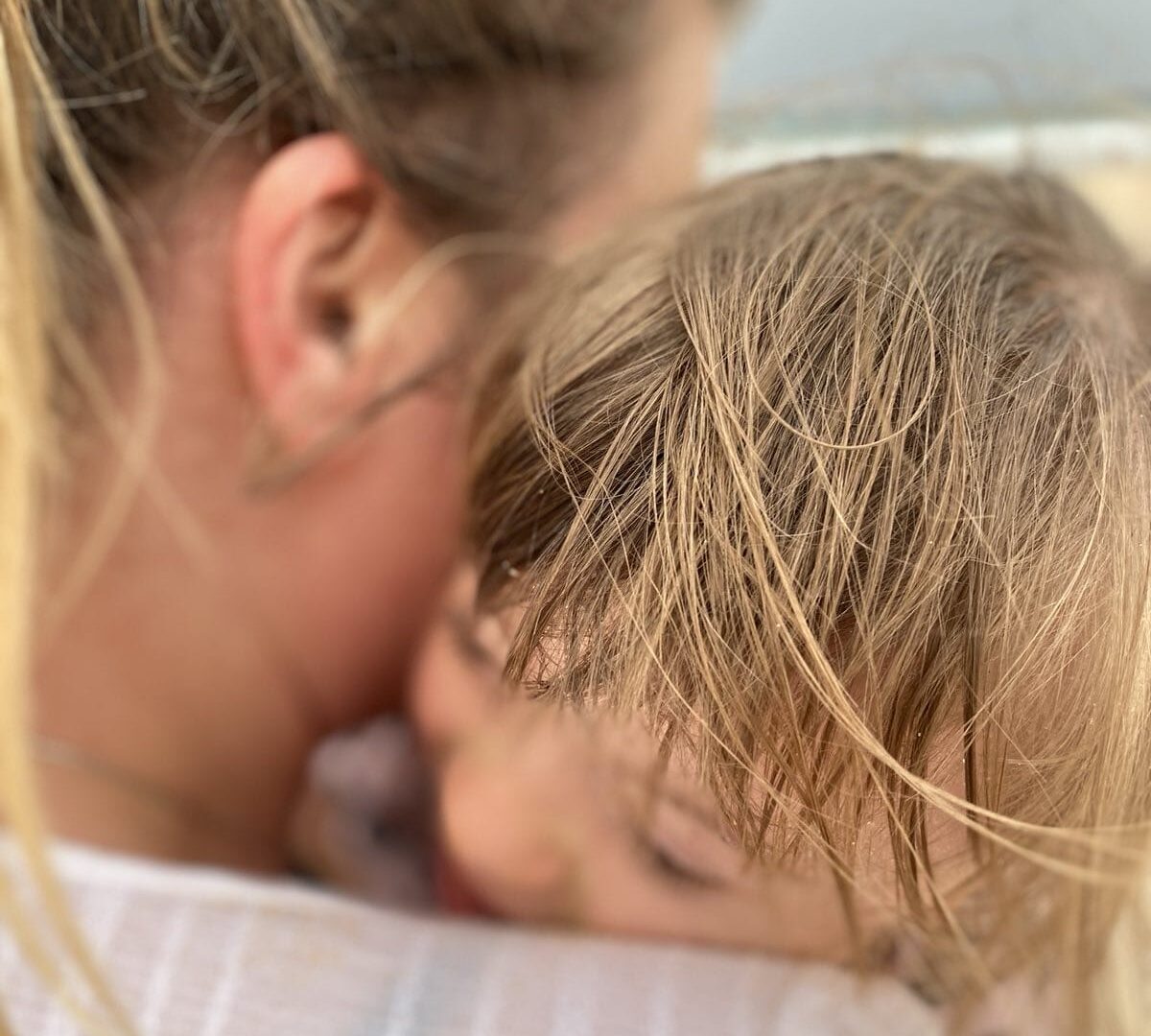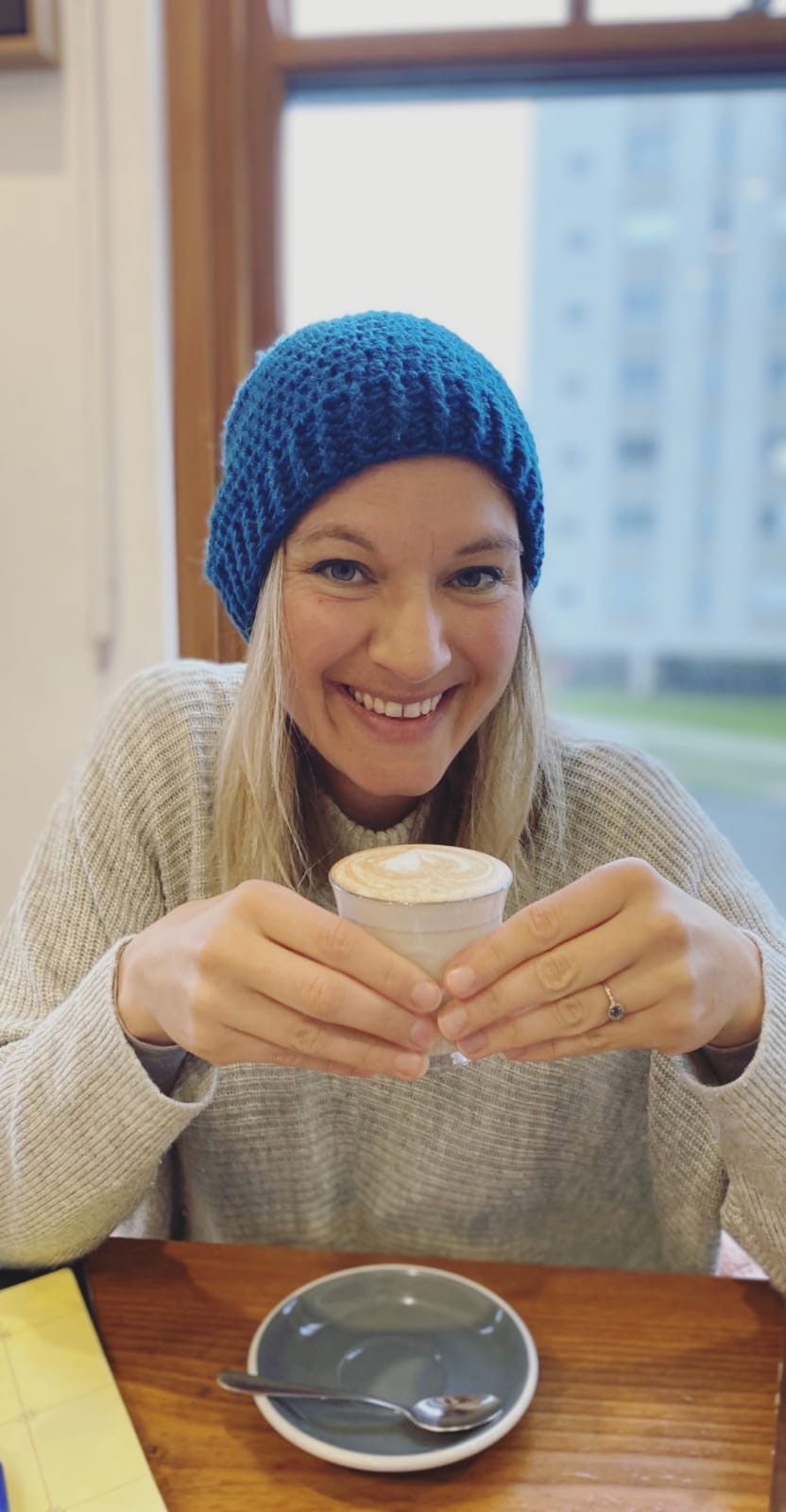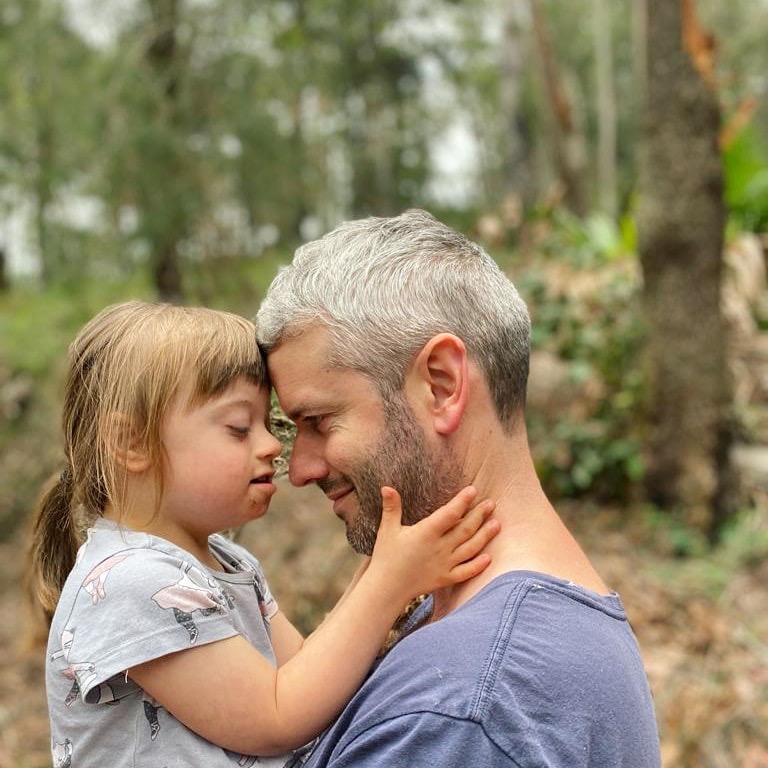Ingerlise’s Story – How Down Became Up
Our story began in Norway, the land of the midnight sun. It was a chilly afternoon, the leaves on the trees were exploding with colour and we were about to meet our little girl for the very first time. She was almost here, where she belonged; in our embrace and in our hearts. My entire being was focused on the life that was about to surface, the little girl I had been waiting for longer than she would ever know, our little love child. From the moment her soft cry filled the room, we knew our world had changed forever. My soul melted when I held her tiny, warm body in my arms. She was perfect.
24 hours later I sat next to my husband in a white room, as proud and delirious with joy as only new parents can be. Routine, they said. But it wasn’t.
My mind exploded. I couldn’t hear, feel, think, breathe. I was caught in a whirlwind dragging me down, down, down. Down into a world with Down Syndrome. The nurse cried, and her tears and sorry, immediately reduced my baby to something less than. Suddenly, there was a despairing but, attached to her life. A thick and sticky fog seeped into every chromosome in my body and as I tried to breathe, another feeling hit me so hard it took years to recover. Guilt. What if Maia felt the sudden shift of energy in the room? What if she could feel our fears? My rational mind shut down, and to this day I don’t remember much of what happened the next five days.
What I do remember however, was the love. The furious, protective, all-consuming, don’t mess with me-kind of love. A raging, fierce and out-of-control love that transformed me into not just a first-time mum, but a lioness ready to rip into anyone with a look of sorrow in their eyes. My girl was here. My Maia. She was perfect. She had Down Syndrome and from people’s reaction I could tell that in their opinion that was well and truly down… except she wasn’t! She was up.
She is up. Happy, sensitive, curious, full of life and above all, a force of joyful zest.
Imperfectly perfect
Maia is, like you and I, the perfect version of herself. Yet the opening act of our story together was blurred by the collision of love, grief and fear caused by the negative discourse surrounding disability. Luckily, in that hazy first week, someone delivered a baby suitcase to our hospital room. It was a gift from Norwegian parents with children rocking a little extra, and this suitcase became our travel guide to a future I didn’t know how to visualise. It symbolised everything I had dreamt about, planned for, longed for, hoped for and cried over.
As we sat in that hospital room overlooking the city that we loved but no longer knew how to fit into, my husband and I made a pact. We refused to accept the manual to a life of less than, that was presented to us. It wasn’t for Maia and it wasn’t for us as a family.
Instead, we were going to embrace our daughter’s extra chromosome as an x-factor of unique opportunities and in the process, write our own, unique story.
First stop: Top of the world
The first stop on our adventure was the top of the world. Together, our family of three, travelled to the land of my youth above the Arctic Circle. This is a place where the winter storms are as fierce as the summer days are gentle, and where mountains steep hundreds of metres straight into the sea. It’s a place where in the midst of darkness, an hour of magic blue hues is all you need to feel alive, awake and awoken by the power of nature. Where the Northern lights roam across the sky, reminding you that life is magic. Where the white landscape explodes into colour in spring, and the sun refuses to settle, instead staying up all night like a naughty teenager. Where nights and days are the same, and where the midnight sun cheers you on to live life to the fullest. To thrive. To be. To feel. To forget about the winter in the past and the winter ahead. To just be – right there.
And in this place, in the darkest of winter, I explored the magic of untouched landscapes where you may assume that nothing could grow. Yet, when given the opportunity, life doesn’t just grow it thrives.
Sun on our shoulders
Four years later and our family now live in the land of my husband’s youth. As I write these words the Australian sun warms my shoulders and Maia and her little sister Lola, play together. Life is beautiful, rich, colourful, brave and bold. And while I don’t spend too much time thinking about the secret ingredient in our family life – that extra chromosome – I do spend a lot of time thinking about how lucky I am.
Not only do I have a beautiful family in a beautiful part of the world, but Maia has changed me for the better. Being her mum is like having a personal life coach to remind me of what really matters. The girls balance me. Where her younger sister brings the zest of a two-year old wildflower, Maia brings perspective and self-love beyond her four years. Together, they complete me just like any children do their parents. My family isn’t that different to yours – we are all on board the roller-coaster of life with good and bad, happy and sad, ups and downs, twists and turns, belly laughs and ugly tears and happy tears and everything in between. It is simply – life. And we love it!
Paying it forward
Still, I couldn’t shake the unfairness of how our story began. I adore words and the way they have real power to shape how we understand ourselves and the world around us. So, I decided to pay forward the gift we were given on that cold, cold autumn day in Norway and add a few tweaks of medical outreach into the mix.
Enter 21 GIFTS: A kindness project with hope and joy as the main characters. A community where we empower parents and medical professionals to rewrite the opening act of a child’s diagnosis story, suitcase by suitcase.
In its physical form, 21 GIFTS is a welcome-to-the-world baby suitcase bursting with hope, inspiration, positive information and of course, gifts for the whole family, courtesy of generous donations from our community. But it is so much more than this. It’s positive advocacy where we use joy as a game changer to address how traditional medical lingo is jam-packed with emotional sway. And oh, my mama heart, how amazing it has been to see health professionals in some of the largest hospitals across four states embrace our concept and open their wards to us. These wonderful nurses, genetic counsellors, neonatologists, midwifes and doctors (or as I like to call them – 21 GIFT-ers!) deliver the suitcase to new parents close to point of diagnosis, whether prenatal or at birth. In the process, they rugby-tackle the hidden bias in the way a diagnosis is talked about. This includes simple things like moving from bad news to unexpected news, from buts to and, from sorry’s to congratulations, and, from a bleak focus on challenges to include OPPORTUNITIES.
Because that is how I see life. It’s an opportunity. An opportunity to create the life that we want for ourselves and those around us. It’s an opportunity to find our real self. To be good to others. To make a positive difference. To feel all the feels, to learn and laugh and cry. To see the good and the strengths in those around us. To choose community, to create it, to be it, to pay it forward and to live every single day with the knowledge that life is a gift.
And for me, that tiny extra chromosome in my daughter, turned out to be exactly the kind of gift I didn’t know that I needed to create the life that I always wanted: A big, bold and colourful family adventure off the beaten track, all carrying backpacks bursting with community, joy and meaning.
Bio:
This story is an edited abstract from Ingerlise’s book in progress called “Snowflake: A parent’s ABC to thrive through a child diagnosis”.
Facebook: @TwentyOneGiftsBox
Instagram: @twentyonegifts
Check in for resources and support and to stay updated on the release of Ingerlise’s first book.
A word of encouragement from one parent to another.
If you are in the thick of the storm right now, trust that it will slow down and reveal a new and more beautiful landscape than you could ever have imagined. It’s like when you get lost travelling – at first you are scared out of your mind about everything that can go wrong and how you shouldn’t be there. Then you look around and notice that being off the grid doesn’t mean you’re actually lost… You’re simply experiencing a different dimension of the place (aka life) – and it ends up being the most meaningful part of the entire journey. But first… You have to breathe. Allow yourself space to feel all the feels. Then lay out your own roadmap – change what you can, accept what you can’t do anything about, and above all, let your values guide you into the light. Choose life and love – and write your own story with your child and family values leading the way.
10 Tips on how to LIVE through a child’s diagnosis.
In the beginning of our journey, I was so in love I couldn’t breathe and so terrified I couldn’t sleep. I was torn by out-of-this-world love, gratitude and excitement, and a dark foggy guilt over who I used to be, what I used to think, unspoken stereotypes and just plain fear of the future. If this is you right now, here are the 10 things I would have told myself back then (and that I still sometimes do!).
- It’s ok to feel all the feels. In fact, it is the only way to move forward, so treat yourself the way you would your best friend. Cry. Scream. Eat that ice-cream. Being sad, angry or terrified doesn’t make you a bad parent, it just makes you human.
- Take a time-out. When you find yourself in the middle of the diagnosis storm, carve out some space to help you breathe and get ready for whatever season is ahead. The world can wait while you look after yourself, because just like on the airplanes, put on your own oxygen mask first. Only you know what oxygen you need – it could be a morning coffee on the beach, a good book, exercise to run off the adrenalin caused by fear, your community group or time alone.
- Surround yourself by people who fill your cup. Community is one of the strongest predictors of a full life. But – just because our children have a diagnosis or because somebody works in the disability sector, doesn’t mean that we have anything else in common. Seek out the people who feel like your kind of people; the doctor who sees life the same way you do; the mums and dads you’d like to hang around both with and without your kids; the speech therapist that gets your way of living.
- Put away that 10-year planner. If you didn’t see the need to plan 10 years into the future yesterday, then you don’t need to do it today. Slow down. Focus on what is right in front of your eyes: Your beautiful child with a passport to a world you are yet to discover the magic in.
- Remember, the diagnosis doesn’t define your child. He or she is still the same human being as they were before you heard the diagnosis. They still are. No diagnosis can predict the quality of a human life, nor the individual strengths and resources your child was born with.
- Stay in the moment and live your values. There are a lot of things that can go wrong in any human life, yet we don’t walk around worrying about every single thing that can happen. Apply the same approach to your child – there may be curveballs ahead, but if you focus too much on what you can’t control, it will only steal the joy from today. Create a family bubble where you live by your values, and use them to help steer through the dark into the light.
- Send out a little SOS. If you find the feelings too overwhelming, remember you don’t need to do this alone. Ask for help from friends and professionals.
- Step away from google. Instead, hit Instagram and get inspired by families going through the same as you in all corners of the world. There are also amazing resources like Able Finder or Mummy Matcher that let you connect with parents in similar situations.
- Step into the sun, literally. Nature heals and right now, you need it all the help you can get. According to researchers, two hours a week in nature is all you need to boost your emotional wellbeing. So, go hiking, sit in your backyard, have a coffee in a city park, watch the waves at the beach or simply lay down in the grass and just… be.
Look for strengths and opportunities. It’s not about sugarcoating reality, but about moving your attention from challenges to opportunities, from grief to love, and from blame to gratitude. Open up your heart to learn your own truth; the one that only you know – and let your child help write your story.










